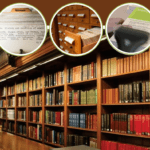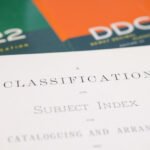Classification code: There is no specific definition of classification code. It has been created in the context of various subjects or situations. It can be easily said in words, the method or principle by which an object can be grouped together and different objects can be separated by keeping its form and physical characteristics. Such a principle or constitution is called a classification code.
Origin and evolution of classification code:
The oldest science in the world is classification. When human thought began to be organized from consciousness, the history of the same classification began. With the advancement of knowledge, attempts were also made in many ways, shapes and forms. From then on, its journey began. This well-organized system of classification has been added everywhere, wherever philosophers and thinkers have opened. This same system has happened in the case of the Bible, and again in the case of the Encyclopedia, many such examples can be given.

For the sake of clarity of discussion, the history of the origin of the classification code has been divided into three eras and discussed.
Ancient Era of classification code:
Vedic sage Ray was the pioneer of the organization of knowledge of Theory, Economics, Passion and Salvation. They divided knowledge into four parts. The four parts created are –
- Theory: Theory includes law, religion, philosophy and ethics.
- Economics: Economics, applied science are discussed in Economics.
- Passion: Passion means linguistics, literature, arts
- Salvation: Salvation includes spiritualism and mysticism
On the other hand, in the seventh century BC, a catalogue was found in the library of Emperor Asuravanipala. In it, the entire collection of the library was divided into several main categories such as grammar, history, law, natural history, geography, mathematics, astrology, magic, religion and fable. On the other hand, the people of ancient Greece and Rome had a mind for order. Therefore, it can be said with certainty that they were aware of the science of classification. Aristotle divided knowledge in this way – political, philosophy, natural philosophy, religious philosophy. He was the first to discover the formula for arranging books according to a specific method, and Ptolemy followed the same formula in Alexander’s books.
The Library of the Pharos was located in Alexandria, Egypt. Callimachus, Egypt’s greatest librarian, served as librarian there between 260 and 240 BC. Callimachus was the author of the earliest known written evidence of classification. Callimachus organized the collections of the library according to the main categories that were then divided in Greek thought. The catalogue that Callimachus produced was called a ‘pinax’ or list. It shows several main classifications. Such as philosophers, legislators, historians, rhetoricians, poets and writers on various subjects. These were then further divided into several sub-categories. The basis of the sub-categories was form, medium, subject and time.
If there were different authors on the same subject, they were arranged in a chronological order. Callimachus is sometimes called the father of book classification. In the first century AD, several broad categories were found in Chinese literature. They were the encyclopedia, art, philosophy, music and poetry, military arts, astrology, and herbalism. The classification system that was invented in China between the third and fifth centuries continued until the twentieth century. These were four main categories –
1. Classical literature
2. Philosophy, military arts, mathematics, theology
3. History, government, miscellaneous
4. Literature
Middle Ages of classification code:
Libraries in the Middle Ages were confined to monasteries and were small in size. There was no need for classification of works. Later, the system of dividing them into three main categories was introduced.
- First: The category was centered on religious books;
- Second: The category was the works of ancient authors;
- Third: The category was placed in the universities of contemporary authors of the seventh art.
These books were arranged according to the ancient categories of the curriculum, that is, following the third and fourth categories.
The third included grammar, rhetoric and logic, and the fourth included arithmetic, geometry, music and astrology.
However, no matter how many methods were invented, none of them was recognized as a classification system until the end of the eighteenth century. In fact, the word classification was first introduced by C.W. Shields, R. Filt and E.C. Richardson in their bibliographies. Philosophers and scientists were fascinated by this method throughout the eighteenth century. Among them, the name of André-Marie Ampère is particularly noteworthy.
Modern Age of classification code:
Both Dewey and Charles Ammi Cutter were influenced by Darwin’s evolution. But James Duff Brown’s classification was largely influenced by evolution. Matter and energy first appeared on earth, then life developed, and from life, mind. Then, writing was born as a result of the fruits of the mind. Based on such an idea, Brown gave birth to his method ‘Subject Classification’. Cutter’s “Expensive Classification” followed the evolutionary pattern and retraced the path of Comte and Spencer. Martell and Hanson welcomed it into the system of the Library of Congress. Meanwhile, the “Universal Decimal Classification” adopted from Dewey added a new dimension to the history of book classification.
Among librarians, Bliss was the one who had the greatest influence on Ampere. He was a long-time devotee of the philosophical exploration and discussion of classification systems.
Bliss’s three major modern books on classification systems were the inspiration for the meeting. Ranganathan was therefore able to discover a harmonious brilliance in Bliss’s genius. Although Ranganathan was inspired by Bliss, he went far beyond that. The classification system that Ranganathan developed through facet analysis was significant. Although he was a mathematician, he did not base this classification on mathematics and statistics, but rather followed the German philosopher J.W. Leibniz, the father of modern science.
Some of the main classification schemes
Among the classification schemes that have gained particular popularity in the modern era, some notable names are given below:
| Date of origin | Name of Classification scheme | Name of Author |
| 1060 | Library Bibliographical Classification(LBC) | It was born in Russia based on the theories of Marx and Lenin. |
| 1876 | Dewey Decimal Classification(DDC) | Melville Dewey |
| 1891-1893 | Expensive Classification(EC) | Charles ammi cutter |
| 1895 | Universal Decimal Classification(UDC) | Institute International the Bibliography (IIB) |
| 1900 | Library of Congress classification(LC) | Hubert Putnam |
| 1906 | Subject Classification (SC) | James Duff Brown |
| 1933 | Colon Classification(CC) | A.S.R. Ranganathan |
| 1940-1953 | Bibliography Classification(BC) | Henry Evelyn Bliss |
| 1978-1997 | The Board System of Ordering(BSO) | UNESCO: FID |
| Nippon classification (NC) | Nippon | |
| Population Classification (PC) | Population Division | |
| Medical Classification (MC) | National Library of Medicine |



